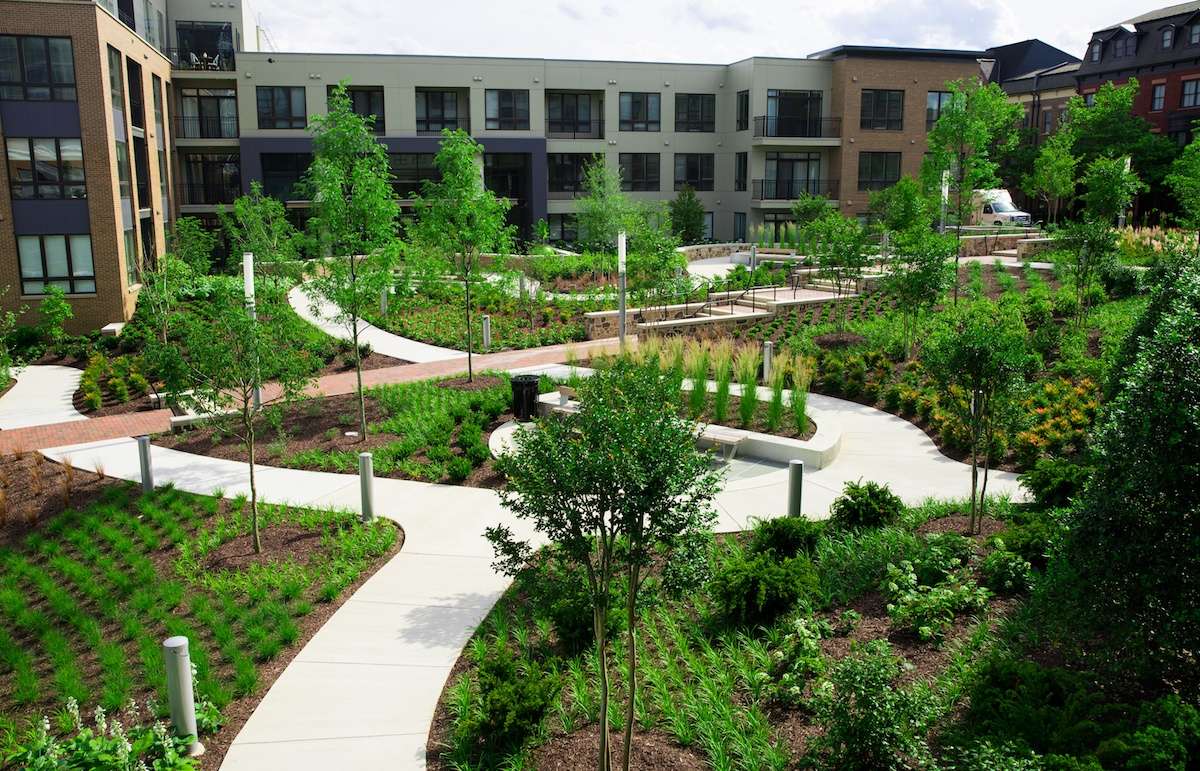
What's the Proper Spacing When Planting Flowers?
It’s human nature to want everything fast — including big, bountiful displays of flowers. So it’s tempting to plant those pretty little begonias really close together.
But what's the proper spacing for flowers? It varies, based on the type of flower, potential impact and your patience.
Let’s take a look plant spacing.
Plant Spacing Can Depend on Preference
“We do what the client wants,” says James Kole, an account manager at Level Green Landscaping.
Managers of some high-end properties want instant impact from their flower beds, Kole says. Downtown Washington DC hotels, for instance, attract global visitors and experience high foot traffic. Property managers want impressive flower beds right away, as their revenue depends on how things look.
“They want the plants touching at installation,” Kole says, “and they want bigger, 6 to 10 inch plants, rather than four-inch plants.”
No problem, he says, but that flower spacing plan comes with extra maintenance.
“As the plants grow, we have to go in and selectively remove some to make room, so air can circulate,” he says.
Patience Affects Flower Spacing Options
If you want a little less maintenance, space annual flowers on a more typical 8-12” on center planting pattern Kole says. That allows room for plants to spread, and they’ll look better and better as summer goes on.

HOAs are typically willing to wait, he says. The closer you space flowers, the more plants you need, he says, and they typically don’t have budgets for that many plants.
Willing To Wait A Bit Longer?
If you’re willing to wait bit longer for your flowers to fill in, space them further apart and use 4-inch plants, Kole says. Bonus: it will save you money, because you'll need fewer plants.
The Dangers Of Planting Too Close Together
If you plant flowers too close together, the plants get stressed and are prone to diseases, Kole says. If air can’t properly circulate and the plants can’t dry out between waterings, fungus sets in. Roots can rot. And once plants are weakened from stress, insects move in.
That's why if you choose to space flowers very close together, Level Green crews prune out some plants as they grow, to create that healthy space between flowers.
How Far Apart Should Perennials Be Placed?
“Perennials are not in the same ballpark,” Kole says. “They’re a whole different sport.”

Hosta, for instance, can grow to be three feet wide, while coral bells might mature at one foot wide.
Each perennial has its own spacing needs.
When you space plants, you measure from center to center of the pots.
Proper plant spacing depends on the type of plant, Kole would space some hostas 18-24 inches apart to allow for growth, for example, and catmint two feet apart.
Fall Flower Spacing is Different
Summer annuals can be planted farther apart because they have all summer to grow and fill in.
But planting fall pansies is different. Plant them in October and they only have one month to grow. So space four one half inch pots no more than nine inches apart, Kole says.
Offer Close Plants An Extra Boost
When flowers are planted close together they need more fertilizer, because there are so many hungry roots in a small area. The soil can’t properly nurture them all.
Level Green crews fertilize those once a month.

Trust Your Flower Spacing To Level Green
What’s the proper spacing for planting flowers on your property?
“Talk to your account manager,” Kole says. “Each flower is unique. We can match your budget and your expectations.”
At Level Green, we’re flower experts. We love designing and maintaining beds and pots of beautiful, attention-grabbing flowers that make properties pop.
If you’re not already a Level Green Landscaping client, we’d love to add you to our growing list of happy customers. Our focus is on commercial properties like offices, mixed-use sites, HOAs, municipalities and institutions in Maryland, Washington DC and parts of Virginia.

Douglass Delano
Doug Delano (and Bill Hardy) opened Level Green Landscaping LLC in 2002 to offer Washington DC, Maryland and Virginia reliable commercial landscape maintenance services.

